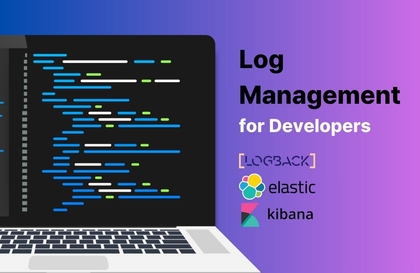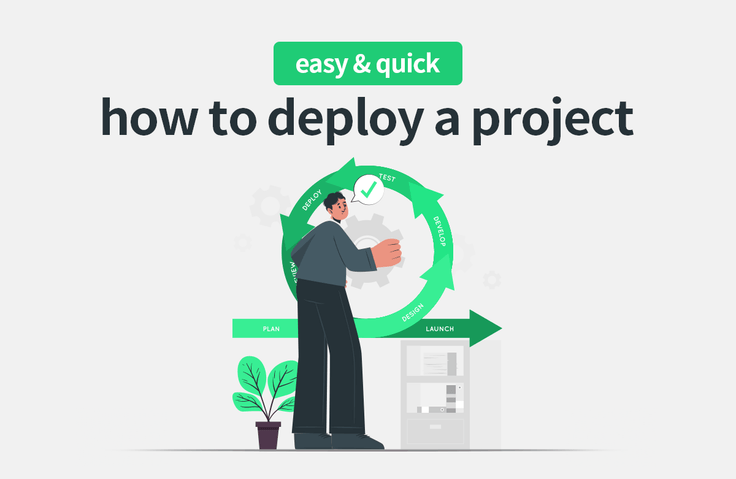
開発者に必要なログ管理
foo
どのようなログを残すべきかという点から始まり、ログを収集し活用するまでの全体的なサイクルについて扱います。
초급
Elasticsearch, logback, Logstash
Through this course, you will gain experience deploying front-end and back-end projects. You will also gain basic knowledge about Linux and networks while deploying projects!

Deploying the project
Linux
GitHub
Who is this course right for?
People who have created a portfolio for employment but don't know how to distribute it
People who want to distribute a project but don't know where to start
Need to know before starting?
Experience in creating simple web applications
Java Basics
5,779
Learners
271
Reviews
116
Answers
4.9
Rating
9
Courses
안녕하세요.
멘토링을 하면서 주니어 개발자들이 어려워 하는 개념들에 대해 어떻게 하면 쉽게 전달할 수 있을지에 대해서 많은 고민을 하고 있는 푸(Foo)라고 합니다.
잘 부탁 드리겠습니다.
이력
2019. 08 ~ 현재 : 카카오 자바 백엔드 개발자
2021. 08 ~ 현재 : programmers 백엔드 데브코스 멘토
2021. 12 ~ 현재 : F-Lab 자바 백엔드 멘토
책
이것이 취업을 위한 백엔드 개발이다 with 자바(링크)
기타 이력 및 타 플랫폼 강의들은 아래 GitHub 링크에서 확인할 수 있습니다.
GitHub - https://github.com/lleellee0
All
16 lectures ∙ (3hr 4min)
All
32 reviews
4.9
32 reviews
Reviews 8
∙
Average Rating 4.8
4
全くデプロイを知らない人たちが聞くなら、基礎講座として良いでしょう。 デプロイを経験したことがない人々には、入門講座としてお勧めします。 しかし個人的にターゲット設定が残念でした。 1. 開発をある程度知っている人の立場からすると、フレームワークで作られたアプリケーションをビルドしてアップロードする必要があるのですが、あまりにも難易度が低い例で説明されている 2. 開発をほとんど知らない人の立場からすると、途中途中で出てくる概念を十分に説明せず、全て知っているものと見なして先に進んでしまう。
ALPHA MOON様、講座の特徴をよくお話しくださり、ありがとうございます。 (_ _) 今後はもう少しターゲットに合った難易度で作成してみます!
Reviews 1
∙
Average Rating 5.0
5
本当によく見ました! 展開について全体的な概念を確実に知ることができるようにした講義です。 伝達力も良くてすっきりした授業進行が良かったです。 ファイアウォール/サーバー/バックエンド/フロントエンドプロジェクトをそれぞれ上げて統合して上げる などとてもお得な講義でした。 ありがとうございます〜
Happyさんの受講評を残してくれてありがとう〜 講義が役に立ったようで嬉しいですね。 ㅎㅎこれからも良い講義でお返事いたします。 :)
Reviews 1
∙
Average Rating 5.0
5
配布が難しく感じられる方や、配布を初めてやってみる方にも強くお勧めします。 サービスの配布、CORS、HTTPS、ドメインの購入や接続などの配布を試してみる必要がありますが、体験できることを簡単に説明していただければ、誰でも講義に従うことができると思います。 地元から離れて展開することができる競争力のある新開発者になるのを助ける良い講義でした。
トロンドンの受講評を残してくれてありがとう! 講義の紹介よりも講義の強みをよく見せてくれたようですねㅎㅎㅎㅎ ありがとうございます〜
Reviews 4
∙
Average Rating 3.8
5
実は後で聞こうと講師様他の講義を先に購入して初めて聞いてみると、あまりにも講義を上手くして、すぐに聞く講義でもう2つ購入しました! 実はこの講義はポートフォリオの配布だから、単にフェットハブの講義のことを知らないように講義の紹介を見ると、実際の配布中心であり、CORS政策のような部分も扱っているようで、一度受講してみました。 結論的に羽より実際の配布過程を扱う講義ですね。大きな期待なしに聞いたが、あまりにも充実した講義だととても満足です! 初心者でもわかりやすく説明も簡単で細かくしてくれて理論説明から実習内容まで丁寧に扱ってくれていいです♥
e.h Leeの受講評をありがとうございました〜 講義のタイトルが何かを誤解させたようですね。 おっしゃるとおり、実際の配布過程を扱う講義です~良いお言葉ありがとうございますし、他の講義も受講していただきありがとうございます~
$11.00
Check out other courses by the instructor!
Explore other courses in the same field!